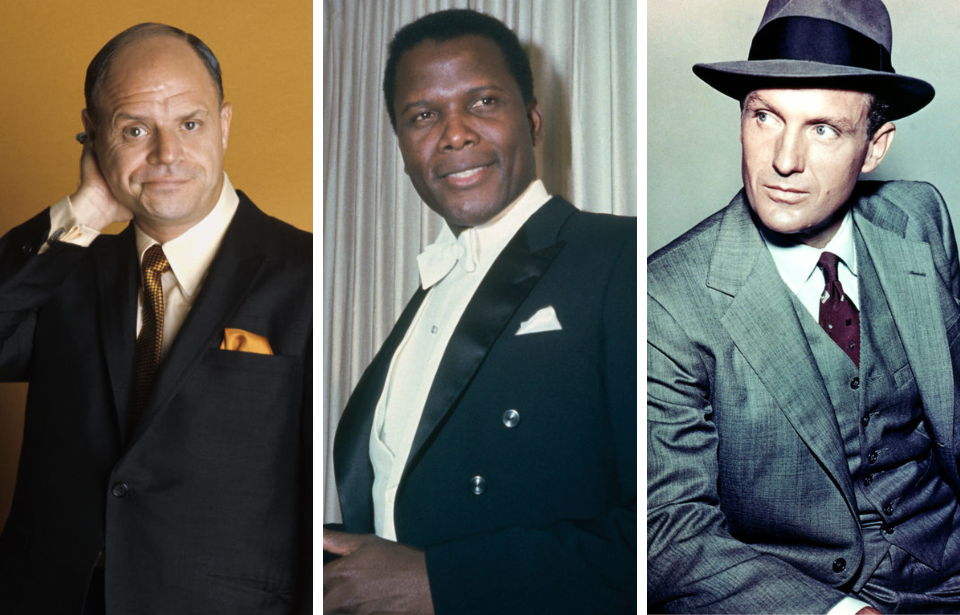Several big-name actors served in World War II – Clark Gable, James “Jimmy” Stewart, David Niven, Henry Fonda, etc. – risking their lives in Europe and the Pacific. Some put their Hollywood careers on hold, while others enlisted before achieving fame. The list of famous service members is almost endless, and the following are stars you might not have realized (or forgot) served in the conflict.
Robert Stack
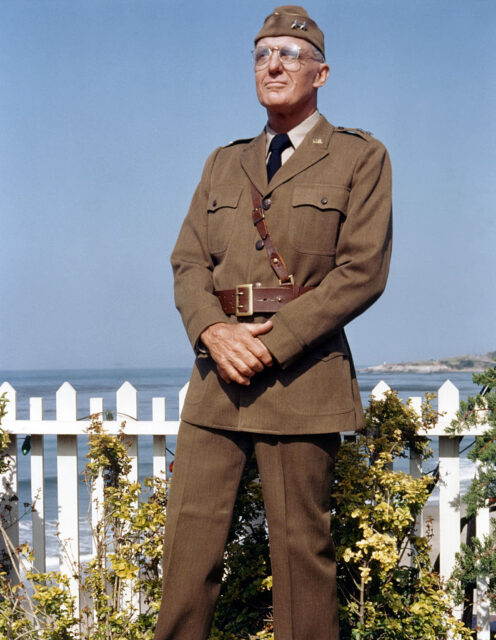
Robert Stack might best be known for portraying Prohibition agent Eliot Ness in The Untouchables (1959-63) and hosting the original iteration of Unsolved Mysteries (1987-2002), but, before achieving fame, he was a gunnery instructor in the US Navy.
Serving between 1942-45, Lt. Stack was tasked with training new aerial gunners because of his aptitude for skeet shooting – he’d been an Olympic champion prior to the outbreak of World War II. He served aboard the USS Hancock (CV-19) and Sitkoh Bay (CVE-86), and for his service was awarded the the Asiatic-Pacific Campaign Medal, the World War II Victory Medal, the Expert Pistol Ribbon, the American Campaign Medal and the Expert Rifle Ribbon.
An actor before the conflict broke out, Stack returned to Hollywood after leaving the service.
Jack Lemmon
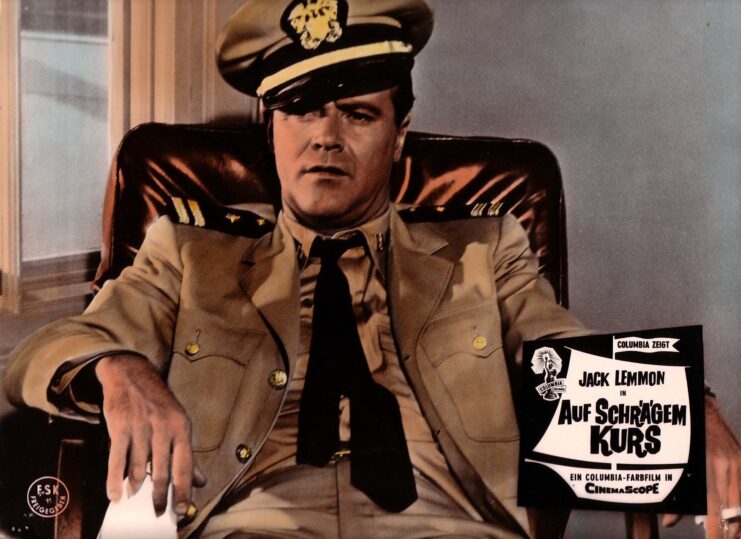
Dubbed “the most successful tragi-comedian of his age,” Jack Lemmon was once one of Tinseltown’s brightest stars. His roles in Mister Roberts (1955) and Save the Tiger (1973) earned him Academy Awards, and his acting career spanned half a century.
Prior to pursuing acting professionally, Lemmon was part of the V-12 Navy College Training Program, which had been enacted during World War II to up the number of commissioned officers entering the service. After being commissioned an ensign, the future actor was assigned to the USS Lake Champlain (CV/CVA/CVS-39) as a communications officer.
Lemmon’s naval service was short-lived. He opted to return to his studies, attending Harvard University, before traveling to New York City to study acting.
Percy Herbert
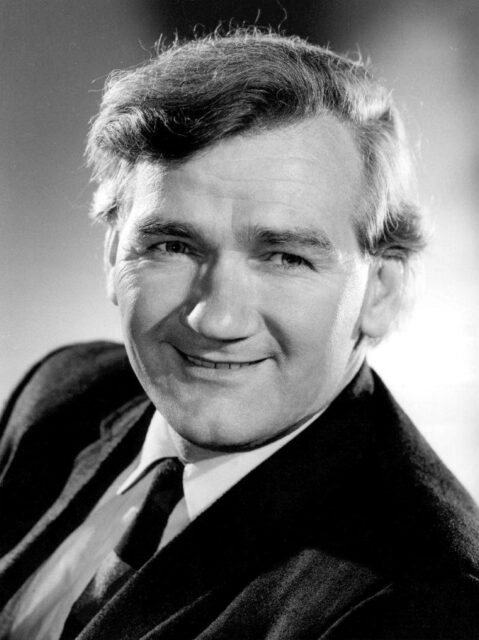
One of the most recognizable faces of British entertainment in the middle part of the 20th century, Percy Herbert lived one heck of a life. Not only did he appear in some of big name war movie hits, like The Bridge on the River Kwai (1957) and The Guns of Navarone (1961), he was also a prisoner of war (POW) during the Second World War!
Serving with the British Army’s Royal Army Ordnance Corps (RAOC) during the conflict, Herbert was captured by the Imperial Japanese Army (IJA) and held as a POW for four years. Imprisoned at Changi POW camp, in Singapore, he didn’t make life too easy for his captors, at one point stealing a can of corned beef, for which he was sent to the cooler for six months.
Herbert’s experience as a POW was used during the production of The Bridge on the River Kwai, with the actor paid an extra $5 to serve as a dual actor-consultant on the film!
Glenn Ford
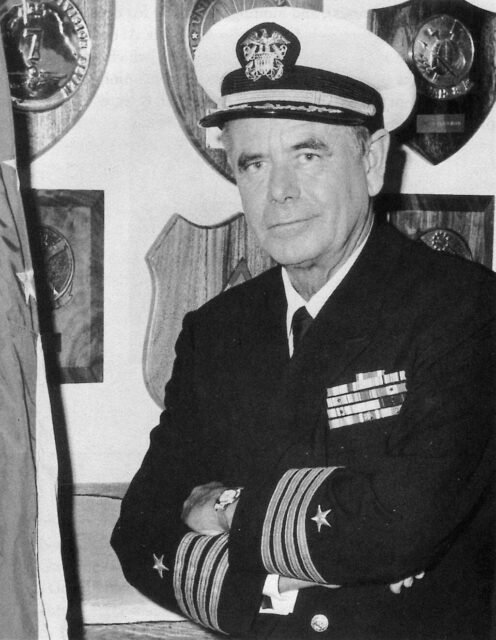
Glenn Ford might be best known for being a prominent face of Hollywood’s Golden Age, but he wasn’t satisfied with just being an actor. He dedicated a good portion of his life to the US military, serving in World War II – and beyond!
Following a 12-city war bonds tour across the United States in 1942, Ford enlisted in the US Marine Corps Reserve. Prior to this, he’d joined the US Coast Guard Auxiliary while the country was still neutral. Not wanting to take advantage of his notoriety, the actor started from the ground up, training at Marine Corps Recruit Depot San Diego and eventually becoming a sergeant.
While he’d hoped to see combat, it wasn’t meant to be. Ford largely worked in a media capacity during the conflict, for which he received the American Campaign Medal, the Rifle Marksman Badge, the Asiatic-Pacific Campaign Medal and the World War II Victory Medal.
He went on to join the US Naval Reserve in 1958 and remained part of the service throughout the course of the Vietnam War. He wound up deploying to Vietnam for one month, where he scouted for a location to shoot a training film around the Mekong Delta. He ultimately retired with the rank of captain.
Don Rickles
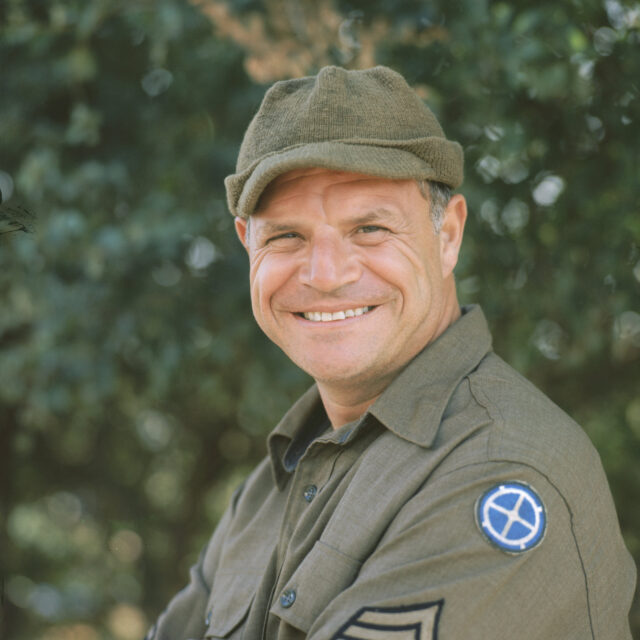
Few actors had the comedic timing of Don Rickles – he was a legend of the genre! Best known for portraying Staff Sgt. “Crapgame” in Kelly’s Heroes (1970); Quartermaster 1st Class Ruby in Run Silent, Run Deep (1958); and the grumpy and hilarious Mr. Potato Head in Disney‘s Toy Story franchise, he had a career that spanned decades, across television and film.
However, did you know that, prior to this, the actor served in World War II?
After graduating high school in 1944, Rickles enlisted in the US Navy. After completing his training, he was assigned to the motor torpedo boat tender USS Cyrene (AGP-13). He also served aboard the submarine chaser USS PC-1264. Unlike others on our list, who remained Stateside, Rickles actually saw action. He was deployed to the Pacific Theater, seeing combat during engagements at Leyte and New Guinea.
Telly Savalas
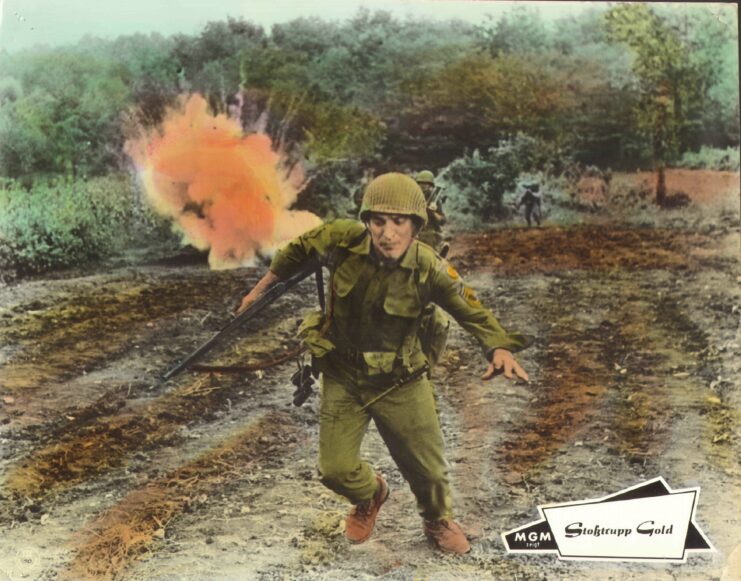
Another Kelly’s Heroes alum, Aristotelis “Telly” Savalas made a name for himself in some of the 20th century’s biggest releases – think The Battle of the Bulge (1965) and Kojak (1973-78). Prior to becoming an actor, however, he was a draftee in the US Army.
Savalas was drafted into the Army in 1941, and he remained with the service until ’43. After completing training, he was sent to Camp Pickett, Virginia, and assigned to Company C, 12th Medical Training Battalion, 4th Medical Training Regiment. He was discharged following a head-on motor vehicle accident, which resulted in him being hospitalized for more than a year. Once fully recovered, Savalas attended the Armed Forces Institute (USAFI), where he studied radio and television production.
As with many veterans, Savalas didn’t talk about his wartime experiences, meaning little is known about his time in the military, other than he received the Purple Heart. Most of his service records were destroyed when a fire erupted at the National Personnel Records Center in 1973.
Clive Dunn
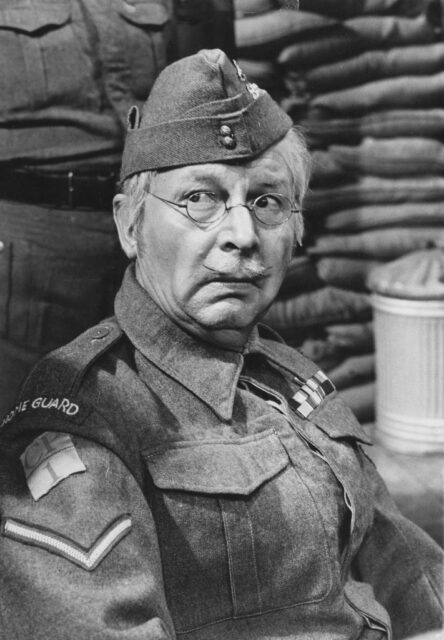
Best known for portraying Lance Cpl. Jack Jones in Dad’s Army (1968-77), Clive Dunn was an acting legend. He and the cast of the British sitcom’s take on the Home Guard during World War II made then international stars, with the series even spurring a feature film, a stage production and a radio show. Many might not realize that Dunn channeled his own wartime experiences for Dad’s Army, having served in World War II.
Dunn enlisted in the British Army in 1940, after learning that the Royal Navy would require a commitment of between eight and 11 years – far too long, in his opinion. He began his military service as a trooper in the 4th Queen’s Own Hussars, which served in the Greek Campaign as part of the 1st Armoured Brigade, 6th Australian Infantry Division.
While participating in action at the Cornith Canal in 1941, Dunn and his comrades were forced to surrender. They were taken as prisoners of war, with the future actor held in Austria for four long years, including at Stalag XVIII-A. He befriended many other prisoners, leading him to aid in various escape attempts, and he administer medical care to others, when needed.
Eventually freed, Dunn remained in the Army following the conflict, until he was demobilized in 1947.
Art Carney
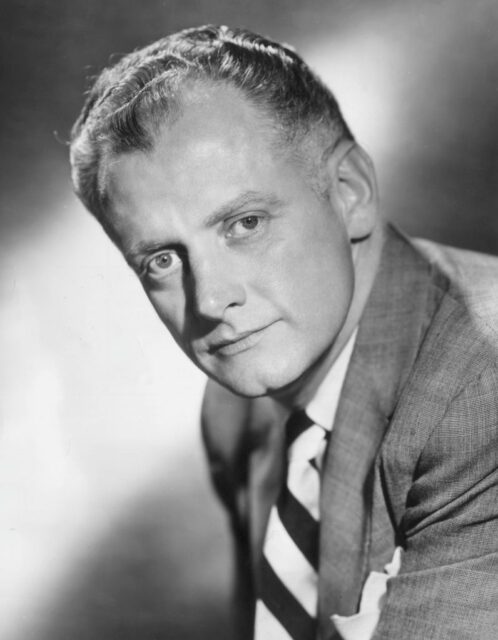
When you think of 20th-century comedy legends, Art Carney undoubtedly comes to mind. The actor, best known for his portrayal of Ed Norton on The Honeymooners (1955-56) and his role in the infamous Star Wars Holiday Special (1978), was a regular face on television and film, but did you know he also took part in one of World War II’s most important military campaigns?
After being drafted into the US Army in 1943, Carney became an infantryman and machine gun crewman with the 28th Infantry Division. He was deployed to the European Theater, where he saw action during the Battle of Normandy – the Allies’ invasion of German-occupied France. He suffered a shrapnel injury during fighting at Saint-Lô, when a German mortar exploded near him while he was manning a machine gun, leaving him with a permanent limp.
Carney was discharged in 1945, with the rank of private. For his service, he was awarded the Purple Heart, the European-African-Middle Eastern Campaign Medal, the World War II Victory Medal and the American Campaign Medal.
Charlton Heston
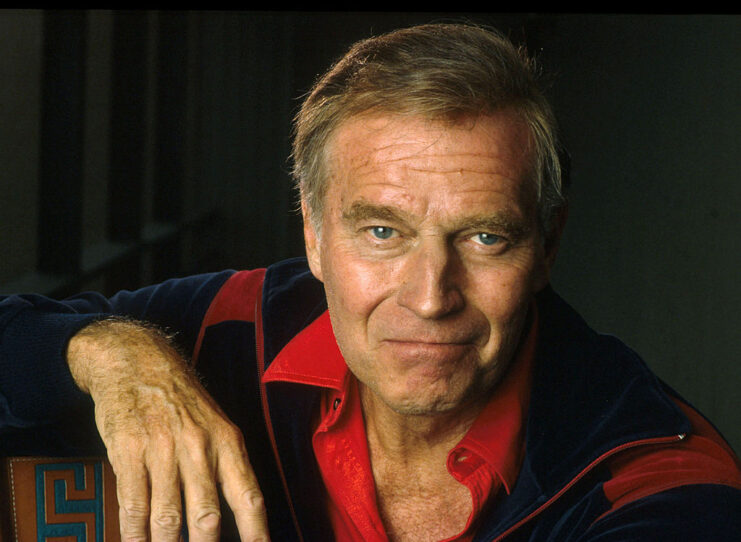
Where do we begin with Charlton Heston? The actor appeared in some of the biggest film releases ever: The Ten Commandments (1956), Ben-Hur (1959), The Greatest Story Ever Told (1965), Planet of the Apes (1968) – honestly, we could go on and on. Before starring in these classics, however, Heston was slated to participate in the proposed American invasion of the Japan.
Heston enlisted in the US Army Air Forces (USAAF) in 1944, serving as both a radio operator and aerial gunner aboard a North American B-25 Mitchell in the Aleutian Islands. A member of the 77th Bombardment Squadron, Eleventh Air Force, he was one of many service members intended to participate in Operation Coronet, which would’ve seen the American forces invade Japan via Honshu, but this was cancelled when the country surrendered following the atomic bombings of Hiroshima and Nagasaki.
Reaching the rank of staff sergeant within the USAAF, Heston spent part of his post-war life narrating instructional films for the Department of Energy (DoE) and the US military. As a result of this work, it’s said that, “for six years Heston [held] the nation’s highest security clearance.”
Bob Barker
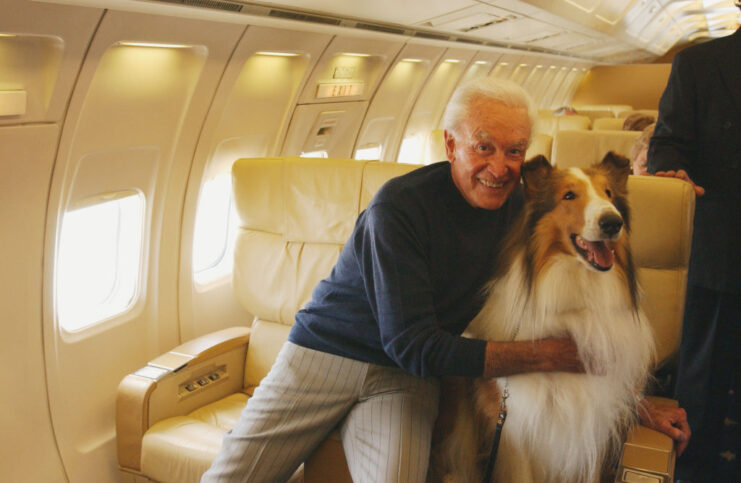
Bob Barker was immediately recognizable as the host of the long-running daytime game show, The Price Is Right (1972-present). His on-screen charm, interactions with audience members and dedication to animal welfare made him one of most popular faces on the small screen.
Following the Japanese attack on Pearl Harbor in 1941, Barker dropped out of college and enlisted in the US Naval Reserve. He was among the many recruits to train as a fighter pilot, piloting the likes of the Grumman FM-2 Wildcat and the Vought F4U Corsair, and learned how to land on an aircraft carrier, the intricacies of night fighting and how to engage an enemy in the air.
Barker ultimately never saw combat, joking later in life, “I completed all facets of my training, including my qualifying landings on a carrier. I was all ready to go, and when the enemy heard that I was headed for the Pacific, they surrendered.”
Sidney Poitier
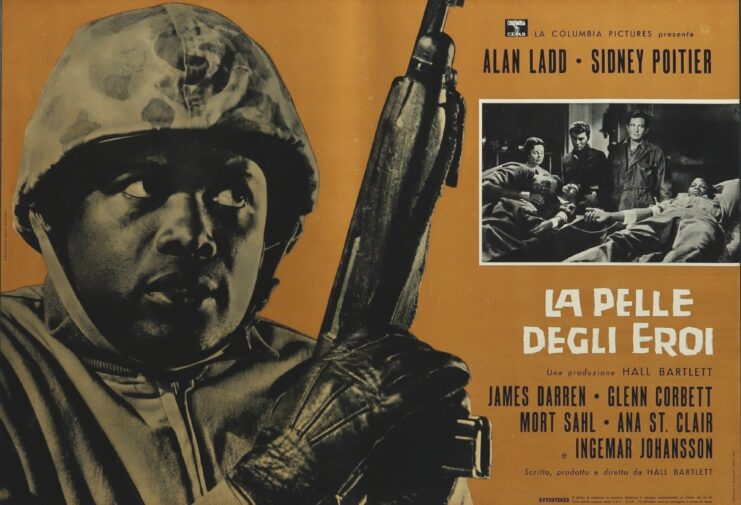
A groundbreaking Hollywood legend, Sidney Poitier starred alongside some of the entertainment industry’s most famous faces, including Katharine Hepburn, Dorothy Dandridge, Richard Widmark and Henry Belafonte. He was the first Black actor to take home the Academy Award for Best Actor, and he went on to receive a host of other honors, such as a GRAMMY Award and two Golden Globes.
Growing up in Jim Crow-era Florida, Poitier knew he needed to escape his upbringing and find a new life for himself. While he ultimately settled on acting, he first pursued military service, lying about his age to enlist in the US Army (he was only 16 at the time). He was subsequently assigned to a Veteran’s Administration (VA) hospital and charged with taking care of patients with psychiatric issues.
It wasn’t long before Poitier learned of the horrible treatment patients at the hospital received. This greatly upset him, and he wound up feigning mental health issues to get a discharge under Section VIII of Army Regulation 615–360. While the doctor easily saw through the ruse, he gave the future actor what he sought.
Rock Hudson
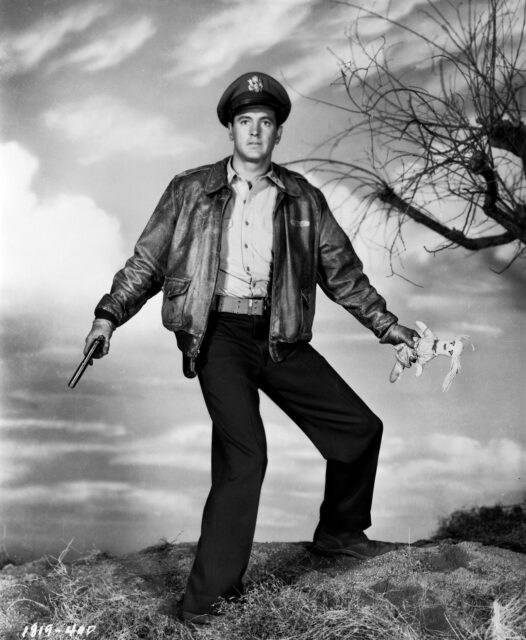
Giant (1956), Tobruk (1967), Magnificent Obsession (1954) – these are just some of the films that launched Rock Hudson to fame. Along with being one of the Golden Age’s most sought-after stars, the actor was also one of the first to be publicly revealed to have AIDS, at a time when there was a largely negative stigma around the virus. Sadly, the diagnosis ultimately took his life.
Prior to being in the public eye, Hudson served in World War II. A year after graduating high school, the future actor enlisted in the US Navy, training at the Great Lakes Naval Training Station. Once prepped for active service, he was assigned to the SS Lew Wallace, a troop transport ship, and deployed to the Philippines.
Once stationed in Samar, the Philippines, Hudson was assigned to Aviation Repair and Overhaul Unit 2, with whom he served as an aircraft mechanic.
Peter Butterworth
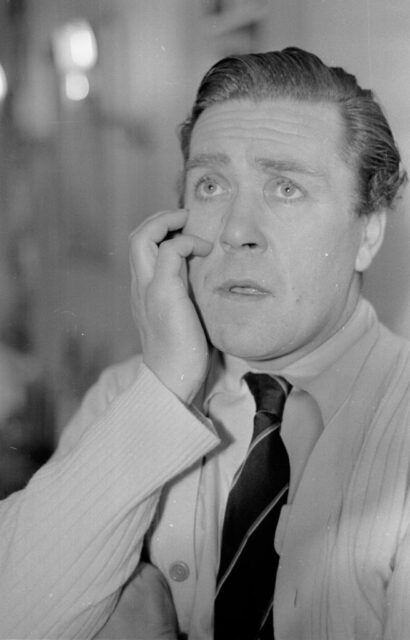
Best known for appearing in the Carry On franchise, Peter Butterworth was a mainstay of British cinema. He appeared alongside some pretty big names – David Niven, Sean Connery and Douglas Fairbanks, Jr. – which further boosted his star, and while his acting career is what made him a household name, his exploits as a prisoner of war should be what makes him stand out from the rest.
A lieutenant in the British Royal Navy’s Fleet Air Arm (FAA) during the Second World War, Butterworth was shot down during an engagement over Texel, in the Netherlands, on June 21, 1940. He was subsequently taken by the Germans as a POW and sent to Stalag Luft III. While he could have kept a low profile and bided his time until the end of the conflict, the future actor became part of MI9, helping to organize escapes from the POW camp.
One of his most notable actions during this time was his aiding in the escape made famous by the 1963 Steve McQueen film, The Great Escape. He helped hide the soil dug from the tunnels, stowing it in the camp theater and having other captives smoke near the site, to mask the smell.
More from us: Lee Marvin: The Hollywood ‘Tough Guy’ Who Earned His Stripes In the Pacific Theater
Want to become a trivia master? Sign up for our War History Fact of the Day newsletter!
Notably, Butterworth met Talbot Rothwell, the writer of many of the Carry On movies, while imprisoned at Stalag Luft III.
